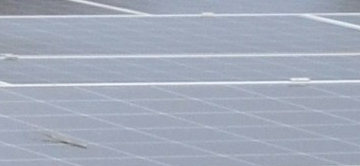The border adjustment mechanism proposed by the European Commission is designed to reduce imported CO2 emissions. An attractive initiative on paper but whose implementation is a real headache. It conflicts with the trade negotiations conducted by the same Commission.
A citizen consultation at the European level
The European Commission has launched a public consultation on the Carbon Border Adjustment Mechanism (CBAM). All European citizens are invited to give their opinion on this central item of the Green Deal by filling out a questionnaire on the Commission's website by October 28. In France, President Macron is counting on the CBAM to finance the recovery plan. Is this a way to resurrect the carbon tax swept away by the yellow jackets in the French political debate? The CBAM has indeed the flavor of a carbon tax since it relies on the same tax base, i.e. the carbon footprint. Nevertheless, unlike the carbon tax, the CBAM does not charge the CO2 emissions during the use of the product (e.g. motor fuel) but the volume of CO2 emitted during its production. Moreover, only products imported into the European Union (EU) are eligible.
In CBAM, the term "adjustment" refers to the difference in cost between products manufactured within the EU and imported products due to the more restrictive CO2 emission controls within the EU imposed by the EU Emissions Trading Scheme (EU ETS). Fair competition between producers located on both sides of the EU border requires that this difference is reduced by a surcharge on imported products from countries with less stringent climate policies. The objective is to avoid "carbon leakage", i.e. the relocation of the industries that emit the most CO2, whose products return to us with more carbon than if they were manufactured within the EU. These imported products alter our carbon footprint when they are consumed. As the French High Council for the Climate stressed in its latest report, while France's carbon balance has decreased overall since 2005, imported emissions have continued to rise so that nearly half of the emissions attributable to France take place outside its borders. Before applying new regulatory turns of screw to the European economic machine, it seems wise to plug carbon leaks by tackling these imports.
From theory to practice
As is often the case in economics, solutions based on relatively simple reasoning prove to be complicated to put into practice. The CBAM is no exception. Economists have identified several pitfalls on the road to its application[1]. The first is the measurement of a good's carbon footprint, that is, the greenhouse gas emissions generated by its production. This information is difficult to obtain on our soil, let alone outside our borders. The carbon footprint is generally estimated on the basis of questionable technical assumptions applied to more or less standardized production processes. The second pitfall is that the carbon footprint of the same good varies according to production technology, location, and inputs. Steel does not emit the same amount of CO2 depending on whether it is produced by reducing iron ore with coke or by recycling scrap in an electric furnace. One should take into account the energy mix (the share of renewable versus fossil energy sources) of the country of origin, and the possible environmental policies adopted to estimate the costs in order to assess the adjustment differential. This requires not only differentiating products according to these criteria but also ensuring their traceability along the supply chain up to our borders. A third pitfall is that plugging certain carbon leaks can accelerate the flow of imported emissions into other sectors. The Commission is proposing to impose a CBAM only for the sectors involved in the EU ETS, such as steel and cement. But this will increase the cost of these products when used by European producers without affecting their external competitors. American or Japanese carmakers will have access to steel with a tax-free carbon footprint unlike European manufacturers. Emissions from non-EU steel production could then cross the border as vehicles, bodies and auto parts, goods that are exempt from CBAM because the car industry is not part of the EU ETS. The leaks plugged upstream in the supply-chain would move downstream.
CBAM à la française
In its response to the public consultation set up by the Commission, the French Government made proposals to make the CAM operational. As recommended by the Commission, it targets only few sectors involved in the EU ETS. The CBAM would involve virtual emissions allowances that companies would have to buy up to the amount of the imported carbon footprint at the EU ETS market price.
The measurement problem would be solved by using an average of the European emissions of the sector under consideration. Differentiation by production process and country of origin could be done by shifting the burden of proof to the producers. The latter would have to demonstrate that their product has a lower carbon footprint or that they comply to costly climate policies, comparable to the EU ETS, in their country of origin.
The advantage of the EU ETS is that it reduces the risk of legal litigation at the WTO under the most-favoured-nation clause since importers face the same costs as companies within the EU both for the price per ton of CO2 and for calculating the carbon footprint of their product. Nevertheless, product differentiation opens the door to intense lobbying from the industry and the EU's trading partners.
Decreasing tariffs without distinction
The European Commission has the mandate to negotiate trade agreements whose main objective is to liberalize trade by reducing tariffs and non-tariff barriers. Agreements with Canada and the Mercosur zone (Argentina, Brazil, Paraguay, Uruguay) have been signed and are in the ratification phase, others with Australia and New Zealand are still under negotiation[2]. The unconditional reduction of tariffs in these treaties contrasts with the CBAM, which, on the contrary, aims at a differentiated increase in the charges applied to imports. Although the trade agreements contain provisions on climate (such as a reminder of the commitments made by the signatory countries under the Paris Agreement), these do not condition trade liberalization.
- example, the treaty with Mercosur includes a gradual liberalization of 99,000 tons of beef carcass equivalent to be imported into Europe free of charge. This legal clause opens a new carbon leakage since producing one kilo of beef emits nearly three times more greenhouse gases if it is produced in Latin America than in Europe according to the FAO. Replacing French beef with Brazilian beef on its plate increases France's carbon footprint through imported deforestation. According to estimates in the Ambec report, the risk of deforestation induced by the liberalized beef tariff quota would have a significant impact on the carbon balance of the treaty. Its contribution in terms of greenhouse gas emissions would be such that the climate cost of the Mercosur agreement would be greater than the economic gains.
*
* *
The Green Deal questions the coherence of the European Commission's actions. While its right hand seeks to plug carbon leaks, its left hand opens up others by eliminating tariffs in trade treaties. The Commission is launching a consultation on a mechanism to erect tariff barriers based on the carbon footprint of imported products while continuing to negotiate trade liberalization with countries known for their disastrous carbon footprint, such as Australia. One wonders whether this consultation is not a smokescreen to hide the carbon footprint of trade treaties. If its conversion to the climate cause is sincere, the Commission should instead use trade agreements as a lever to plug the carbon leakage. One solution, advocated by the Ambec report and a joint initiative by the Netherlands and France, is to make the reduction of tariffs conditional on concrete commitments by signatory countries regarding their greenhouse gas emissions.
[1] See for example: Cosbey, A., S. Droege, C. Fischer and C. Munnings (2019) “Developing Guidance of Implementing Border Carbon Adjustments : Lessons, Cautions, and Research Needs from the Literature,” Review of Environmental Economics and Policy, 13(1): 3-22.
[2] For an exhaustive list of these agreements and negotiations, see: https://ec.europa.eu/trade/policy/countries-and-regions/negotiations-and-agreements/





